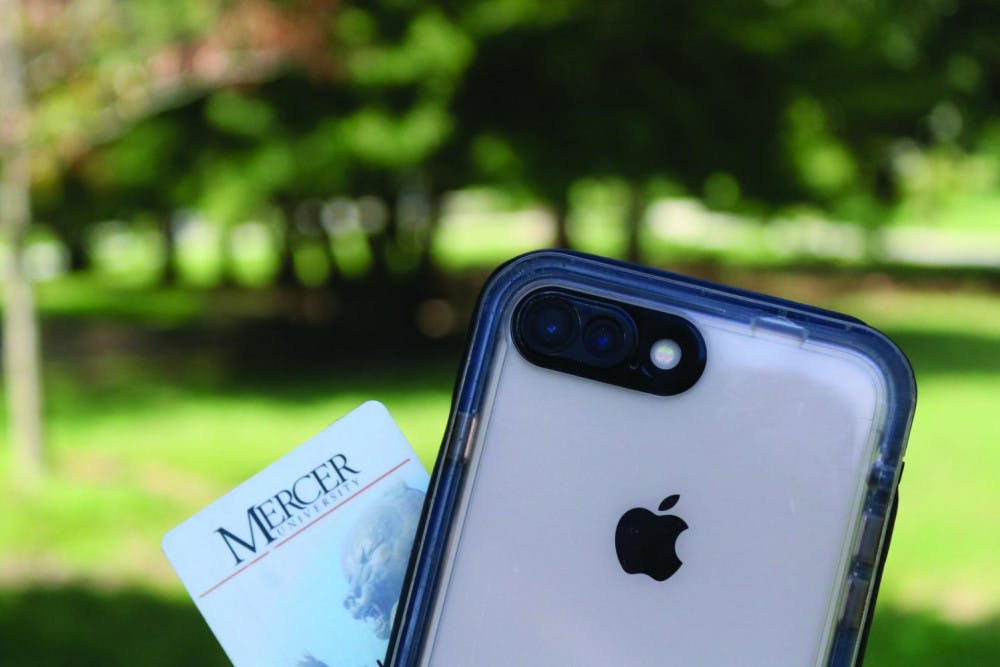While some of us are still saving up for the $699 iPhone 11 (as well as the even pricier iPhone 11 Pro and 11 Pro Max, all released Sept. 20), Apple also rolled out iOS 13 for most devices Sept. 19. If you’re more of a tablet person, the software update included a tablet-specific upgrade, iPadOS, finally creating two separate operating systems for the iPhone and iPad.
The iPhone 11: Improved battery life, camera upgrades and... "slofies?"
The iPhone 11 has an improved battery life, but to afford the space, Apple ditched the 3D Touch feature. Otherwise, the primary aspect setting the iPhone 11 apart from previous versions is the upgraded camera, so if you like the camera on your current phone, you might not want to spring for the iPhone 11. The device is otherwise visually similar to the iPhone XS, although there is a new matte finish on the back of the 11.
The iPhone 11 features a dual camera, one ultra-wide-angle lens and another that takes quality photos at night. They’re arranged in a square shape, which helps offer an 85-degree field of view compared to the 70 degrees provided by the iPhone XR, as well as a slow-motion effect to the front-facing camera. I like the idea of being able to add an additional person to a group selfie, but the slo-mo stuff takes it a bit too far: according to Apple, it’s for taking “slofies.” I tried to convince myself that slofies were some kind of joke, but Apple is actually trying to trademark the word, so I guess slofies are becoming a thing for some reason.
In terms of real benefits that people actually care about, the iPhone 11 Pro has an even better camera than the 11, but for a $300 price hike. However, the screen is smaller, at just 5.8 inches compared to 6.1 inches on the 11, so the three camera lenses take up a ton of space. They’re also each raised, and all three are housed in a carved-out section on the phone body. While the pictures it takes are as close to professional as you can get with a smartphone, I don’t think an ugly, bulky exterior is necessarily worth it.
Aside from the camera, Apple claims that the glass used for the iPhone 11 is the strongest ever included on a smartphone, which is an easy selling point for folks like me who can’t go a month without cracking a phone screen. It’s also got improved water resistance, which is a plus for me, too, as someone who once accidentally submerged an old iPhone in an entire cup of coffee. (It was a rough morning all around.)
iOS 13: Updates to classic apps, animated Memojis and Dark Mode
iPhone 11s come pre-installed with iOS 13, which means that another generation of older iPhones will no longer be able to take advantage of future software updates. The iPhones 6, 6 Plus and 5S were able to run iOS 12, but won’t support iOS 13.
iOS 13 is the biggest software update Apple has released to date, and some major changes affect the Maps, Reminders and Photos apps native to the iPhone. Generally, the three are more streamlined and user-friendly than before.
My favorite is the Reminders app. You can add locations, links, follow-up actions and even photos to your Reminders, which could be super helpful for a student. I can see myself attaching screenshots of important emails, links to Canvas assignments or pictures of items I want to remember to buy when I get my next paycheck.
Maps has also received an overhaul, which I’m excited about after being led astray one too many times by the previous app. Unfortunately, the Maps updates aren’t available in every state yet. Georgia is one that will have to wait until 2020 for the new details such as Look Around, which is Apple’s answer to Google Maps’ Street View.
Without a doubt, the best thing about iOS 13 is the introduction of Dark Mode. It inverts white and gray colors for black and dark grey in most apps, which not only extends battery life but also reduces eye strain. According to the Mayo Clinic, eye strain is most commonly caused by screen brightness and extended screen use.
I’ll admit, I’m not really sold on Dark Mode most of the time. That’s why I was surprised that I loved how much easier it is to read texts at night or check my phone when I wake up in the morning. For me, the difference is that iOS 13 makes it available on many apps that I use, while it was previously just an option on a few. For example, the switch from dark Twitter to bright iMessage was jarring, but now I don’t have to worry about it, so it’s overall a simpler and more positive experience.
One drawback to iOS 13 is the ubiquitous Memojis. Technically, Memojis were rolled out in iOS 12, but I didn’t know they existed until this month when I traded in my iPhone 6 for an iPhone XR, since Memojis aren’t available for devices earlier than the X. The most recent update animates and includes Memojis as stickers in your iMessage and Mail apps. They’re cute, but honestly, I think they’re weird and a bit of a waste of time. Why would anyone need to email a massive cartoon of themselves crying or an animated octopus emoji?
As far as drawbacks go, though, that’s pretty minimal, since I can just ignore it. And while the initial response to iOS 13 revealed that the update contained several bugs, Apple released the revised iOS 13.1 within a week, which resolved many of the issues. Overall, this season of Apple products is solid, but the iPhone 11 is probably not worth the investment if your current model will support iOS 13.





